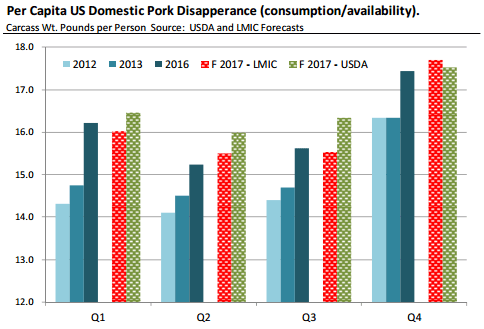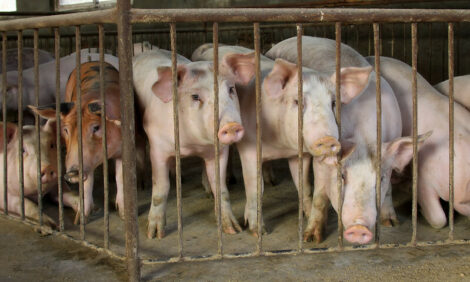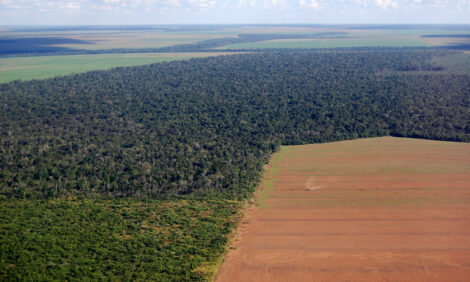



CME: Cash Hog 0Prices Move Steadily Higher
US - Cash 0hog 0prices 0have moved 0steadily 0higher in the last 0two months 0and were 0 higher 0once 0again 0the night before last, according to the Steiner Consulting Group, DLR Division, Inc.The IA/MN Negotiated Base Lean Hog Carcass price was quoted yesterday afternoon at 73.78/cwt, 80 cents higher than the previous close and $3.71/cwt higher than the previous week. The CME cash index value is currently at $75/cwt as the premium over the base IA/MN value has returned to more normal levels (it was over $4/cwt last fall). What's driving the move in cash hog prices?
Robust pork demand, particularly demand for pork bellies, and packer competition for hogs as supplies seasonally decline. The chart below shows the value of the pork cutout, last night quoted at 85.38/cwt, almost unchanged from the previous week but now 11.7 per cent higher than the previous year.
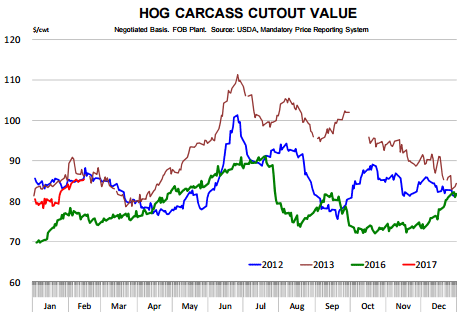
The gains in the value of the cutout have come even as US producers bring a lot more pork to market. It is interesting that so far pork cutout values have been trending fairly close with the levels we observed in 2012 and 2013, before all the disruptions caused by PEDv.
The question for market participants at this, is whether pork prices will fade in the spring, as they did in those prior years; or if the excellent demand that has underpinned pork values to this point continues right into the summer.
Consider how various components of the cutout have fared to this point. While the gains in the price of pork bellies certainly have been incredibly impressive, other products also are contributing to hog carcass values.
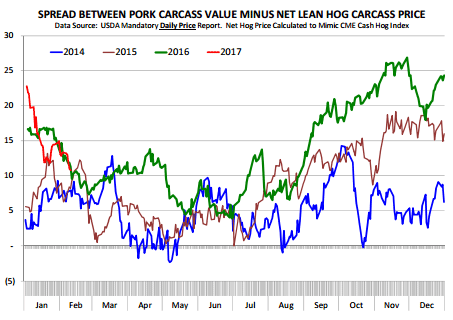
The value of the ham primal currently is up 11 per cent compared to a year ago while the value of picnics and butts is up 10 per cent and 9 per cent, respectively. Loins continue to struggle but the 5 per cent decline from last year actually is in line with what one would expect from the increase in pork supplies.
Getting consumers to pay up for pork loins has been a challenge for some time given increased competition from other proteins and also, in our view, a shift in consumer demand towards items that have more fat/flavor.
Pork belly prices, the epitome of that delicious blend of fat and flavor, currently are running 40 per cent above last year's levels. For now, cutout values are robust enough to provide the packer with an incentive to run full schedules.
As hog prices have increased at a faster pace than the value of the cutout, the meat margin cutout minus hog price) is now close to what it was in 2015 and 2016. One factor that remains supportive and provides an added incentive to maximize slaughter is the value of the drop credit, which has improved substantially in the last few months.
Calculations from the Livestock Marketing Information Center peg the value of the hog drop credit (the value of by‐products) at $19.14 per head, $5.5 per head (+40 per cent) higher than a year ago. The gains in the value of by‐products and still quite strong returns from meat sales mean that packers have no reason, at least for now, to slow things down.
While they may slow down Saturday slaughter as hog supplies seasonally decline, the demand for hogs during the regular week remains quite strong, hence the robust cash prices. For now futures are trading the hog market very carefully, cognizant of the fact that a downturn in pork belly prices could lead to significant value erosion in the cutout. Per capita pork availability this year is expected to be at or above year ago levels, depending on how bullish once is about export demand.
We have presented both the implied USDA per capita pork consumption forecasts and the forecasts from LMIC in the attached table. The point is to show that current supplies available to the US consumer are expected to be significantly higher than a year ago and robust demand remains critical. This is especially true for next fall (see chart).
